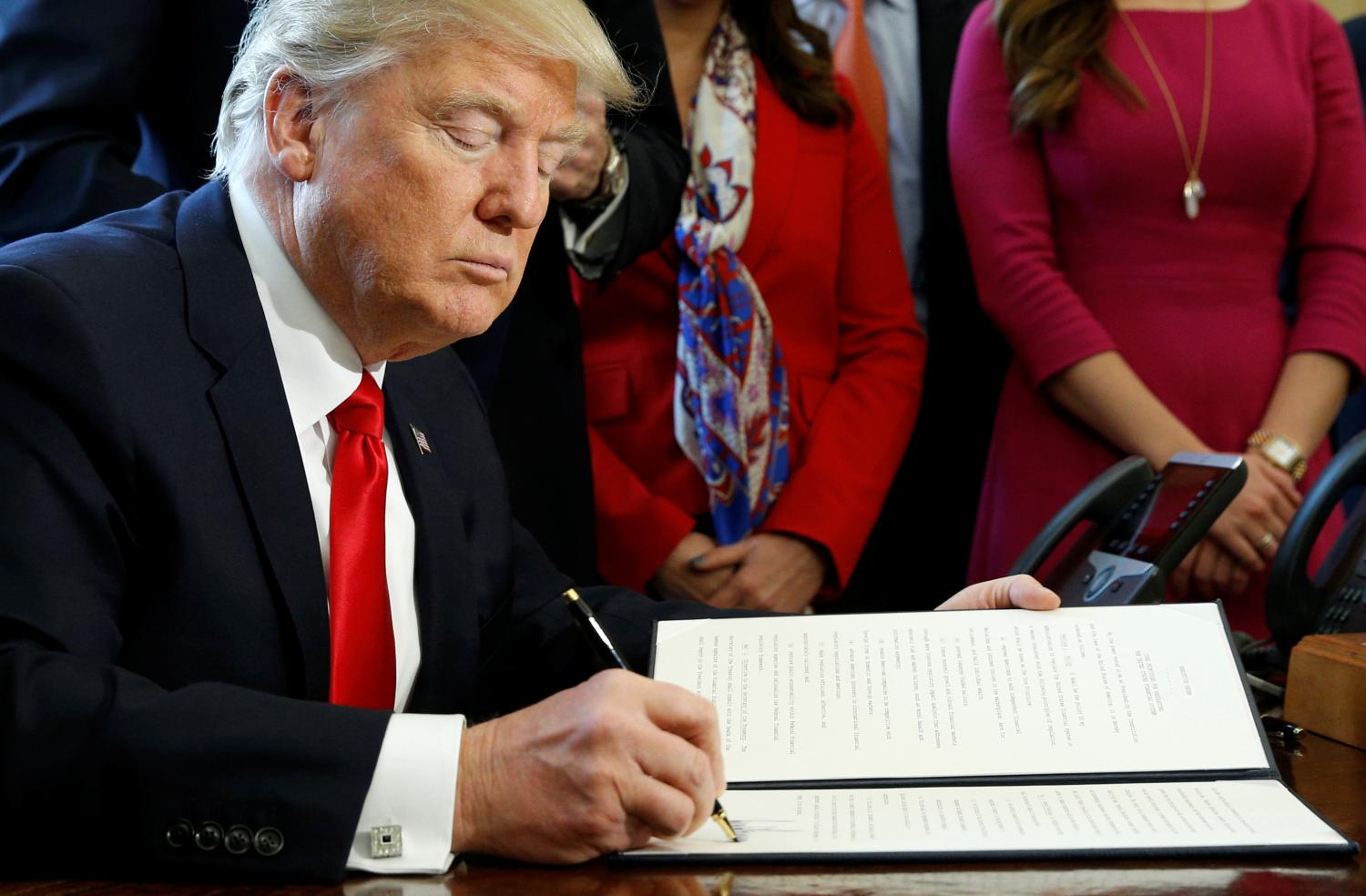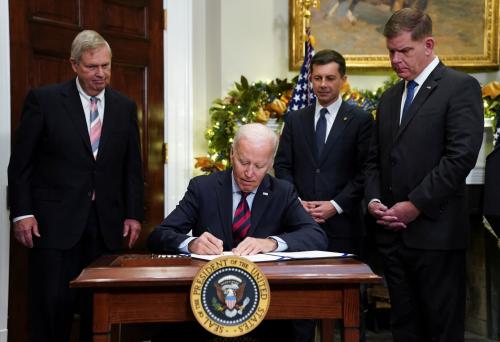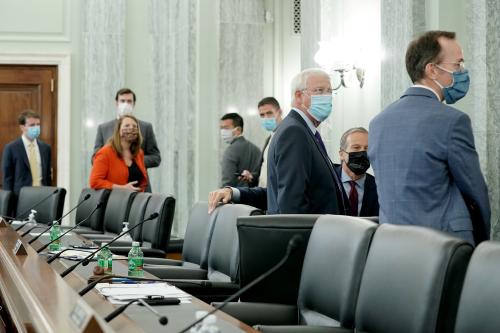This report is part of the Series on Financial Markets and Regulation and was produced by the Brookings Center on Regulation and Markets.
As the Trump administration sets its sights on the Dodd-Frank Act regulations that once seemed likely to endure for the next generation, the rules for resolving a troubled, systemically important financial institution (SIFI) are a particularly inviting target. Not only are these rules easy to attack, since they look suspiciously like the bailouts that President Trump’s new executive order vows to prevent; they also are easy to repeal. This combination may make intervention irresistible.
Start with the seeming bailout. Dodd-Frank’s resolution rules—known as Title II or the Orderly Liquidation Authority—give the Federal Deposit Insurance Corporation access to copious funding from the U.S. Treasury when the FDIC takes over a troubled SIFI. The FDIC can borrow up to 10 percent of the SIFI’s pre-resolution value or 90 percent of its value during the resolution, no questions asked. Dodd-Frank tries to make sure that the funds will be repaid by giving the loans priority and authorizing the FDIC to seek assessments from other big financial institutions if there is any shortfall. But the fund can be—and has been—condemned as a bailout. It is a large source of funding for putting out financial institution fires, and in this sense looks a lot like the $700 billion Troubled Asset Relief Program (TARP) that many associate with the bailouts of 2008.
Even if the Trump administration does not try to repeal Title II altogether, the funding provisions are an easy mark for a more surgical intervention. Because the Title II funding provisions have direct revenue implications—removing them would reduce the government’s financial obligations—repeal legislation would require only a simple majority and could not be filibustered in the Senate under the once obscure but now (thanks to the Affordable Care Act debate in 2010) well known “reconciliation” procedure. There already has been discussion of the possibility of repealing Title II’s funding provisions, either as a stand-alone measure or as part of a package of reforms that can all be passed through the reconciliation process.
If Title II’s funding provisions are repealed, Title II therefore might wither on the vine. Title II would still be on the books, but it might not be used.
In one respect, repealing the funding rules would be a highly effective strategy for undermining Title II. Regulators and advocates of Title II have repeatedly pointed to the funding provisions as an essential benefit of Title II as compared to addressing a SIFI’s financial distress in bankruptcy, which lacks a guaranteed source of governmental funding. Without this funding, they argue, regulators would be far more reluctant to invoke their Title II resolution powers, for fear the absence of funding could cripple the resolution process and magnify the risk that creditors will flee at the first sign of trouble. If Title II’s funding provisions are repealed, Title II therefore might wither on the vine. Title II would still be on the books, but it might not be used.
The problem with this strategy for ending bailouts is that it actually could make true bailouts more likely, rather than less. If regulators are reluctant to use Title II, there will be strong pressure to bail out a SIFI that falls into financial distress, just as there was in 2008. The Dodd-Frank Act limited the Federal Reserve’s access to the emergency lending powers it employed to bailout Bear Stearns and AIG in 2008 by forbidding the Fed from making emergency loans to an individual SIFI. But this restriction will not be difficult to circumvent. If the Fed wishes to bail out a troubled SIFI, it can simply create an industry-wide program, knowing that its first and possibly only customer will be the troubled SIFI.
To be sure, it is possible that bankruptcy might prove to be the resolution strategy of choice if Title II’s funding rules were repealed, either because regulators would resist the temptation to bail out a troubled SIFI, or because the SIFI might file for bankruptcy before regulators stepped in. Even if this were the case, however, it would counsel in favor of repealing Title II altogether rather than simply removing the funding provisions. Gutting Title II while leaving it in place would magnify the uncertainty as to what will happen with a troubled SIFI. Regulators would be unlikely to use Title II, but it would remain available as a flawed option.
Either way, sidelining Title II will only work if Congress enhances bankruptcy’s capacity to handle a SIFI failure. Last year, the House passed legislation (the Financial Institutions Bankruptcy Act) that would help in this regard by facilitating a “quick sale” recapitalization of a troubled SIFI that is similar in many respects to the Single Point of Entry strategy that regulators have signaled that they intend to use for Title II resolutions. Harvard law professor Mark Roe and I have argued elsewhere that the legislation is flawed in some respects and should be revised. But it is an important step in the right direction.
In my view, it would be a mistake to repeal either Title II’s funding rules or Title II itself. The best solution would be to enhance the bankruptcy process so that it becomes the resolution strategy of choice, while leaving Title II in place as a last resort. But if Congress repeals part or all of Title II, bankruptcy reform will be even more essential than it already is.
The author did not receive financial support from any firm or person for this article or from any firm or person with a financial or political interest in this article. He is currently not an officer, director, or board member of any organization with an interest in this article.









